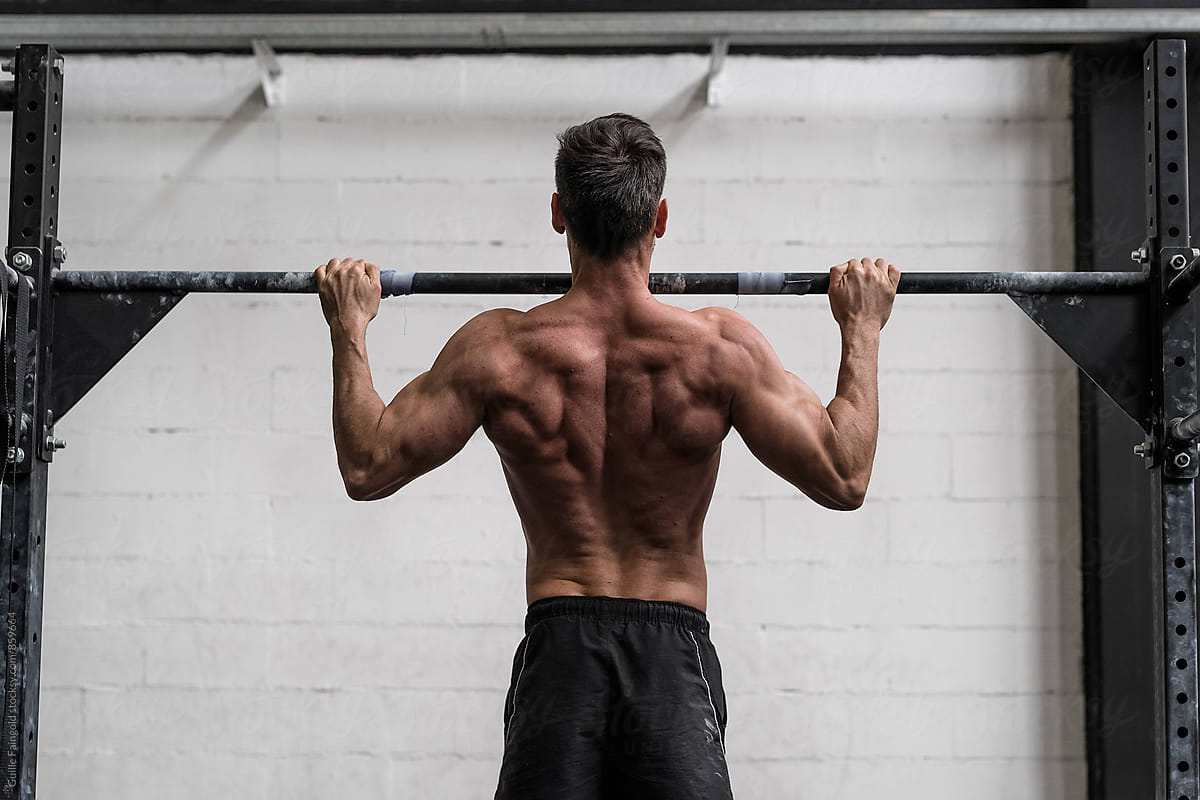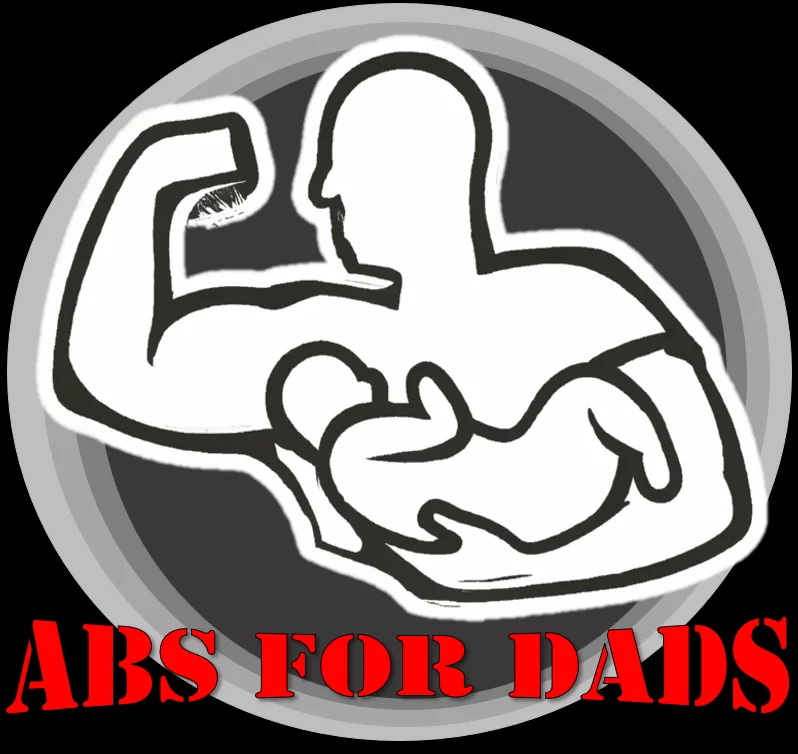THE BLOG
The Ultimate Fitness Blog for Dads
TOPICS
Welcome to Abs For Dads, your premier resource for time-efficient fitness solutions tailored for busy fathers. Discover practical tips and expert advice to transform your health and fitness, seamlessly integrating into your demanding schedule.

Fitness
Explore our curated fitness tips and routines designed to maximize efficiency for the modern dad. Whether at home or the gym, our time-sensitive workouts ensure you achieve optimal results with minimal time investment.

Nutrition
Unlock the secrets of hassle-free nutrition with our easy-to-follow meal ideas and delicious recipes. Abs For Dads empowers you to make informed food choices that align with your fitness goals, promoting vitality and strength.

Lifestyle
Enhance your overall well-being with our lifestyle hacks. From stress management to effective time optimization, our blog covers a spectrum of topics ensuring you achieve success in your fitness journey.

The Strong Dad Series: Building a Big Back
Let’s be honest for a minute. All I ask is for a minute of your time to level with me and every other human being on earth and acknowledge the fact that there’s value in looking good. Look, obviously there’s a great deal of value in being healthy for the sake of being healthy. At Abs For Dads, we advocate for living your healthiest possible life! That said, we also don’t think there’s anything wrong with getting jacked along the way. So what if you want to have big arms, a 6-pack, and a tight rear end for your wife to appreciate? That doesn’t make you a bad person.
And that’s why we want to officially roll out the newest chapter of our blog: “The Strong Dad Series.” We want to equip dads like you with the knowledge you need to lose weight, build muscle, and walk around like the king you are because hey, you deserve to like what you see in the mirror. So today we’re going to tell you how to do that with one of the biggest and baddest muscles out there. When you see a big back, there’s no two-ways about it. That stuff is impressive, and it’s the stuff of gym envy. Look, you already carry the team on your back, so why not give yourself the gift of a big back to show the world that you’re here, and you’re the authority on turning heads when you walk into the room. Let’s get after it.
Understanding Back Anatomy for Targeted Training
Back Anatomy
There’s a lot going on with the muscular structure of your back, so let’s take a second and briefly talk about what makes up this mammoth of a muscle. The back comprises the latissimus dorsi, trapezius, and rhomboids. Knowing this helps you focus on specific muscle groups when exercising. For instance, to target the lower part of your back, exercises like bent-over rows are effective. But that horizontal stuff doesn’t do the trick if you want the really wide upper part of the “V” look.

The latissimus dorsi (codename: lats) is the largest muscle in the back and plays a key role in activities involving pulling or lifting movements. At least, that’s assuming you’re lifting things correctly. Meanwhile, the trapezius supports posture and shoulder movement. It's divided into three parts: the upper, middle, and lower traps. Lastly, the rhomboids, located between your shoulder blades, help retract your scapulae (shoulder blades). The rhomboids are all about horizontal pulling (think cable rows).
Quick summation: different exercises engage different parts of your back. For example:
Pull-ups primarily work on your lats
Shrugs target mainly the upper traps
Rowing exercises activate both the lats and rhomboids
Deadlifts just blast everything all at the same time. Though some back muscles are being tasked to stabilize throughout this motion rather than actively performing the movement
Targeted Training
When focusing on a specific area of your back during workouts, it's essential to use exercises that isolate those muscles effectively. As you saw, you can’t just throw any old exercise at it and expect everything to grow proportionally. By understanding which muscles each exercise targets, you can tailor your workout routine to address any imbalances or weaknesses in your back muscles.
Targeted training not only helps strengthen weak areas but also prevents injury by making sure all parts of your back are equally strong and functional.
Barbell Row Technique for Middle and Upper Back Growth
Proper Form
As with any exercise, when performing the barbell row to develop a big back, it's crucial to maintain proper form. Keep your back straight throughout the movement, and as you pull the bar towards your lower chest, engage your core for stability. Avoid using momentum to lift the weight, ensuring that your muscles are doing the work. When you do this exercise, it’s okay to get a nice deep bend at your hips, just make sure that you maintain a neutral spine through the movement.
It’s also useful to focus on squeezing your shoulder blades together at the top of the movement. This action maximizes engagement in your upper back muscles and contributes significantly to overall muscle growth in this area. By consciously emphasizing this kind of motion, you ensure that each repetition effectively targets and strengthens these key muscle groups. A good method to make sure you’re doing the exercise correctly is to make sure that you maintain a straight line from the back of your head to your tailbone. Someone should be able to take a rod and it rest perfectly flat against the back of your head, along your back, and down to your butt. Any arching in your lower back or slouching of your neck or shoulders means you’re adding unnecessary strain to your body and taking emphasis off of the target muscles.
Utilizing Resistance Bands
Incorporating resistance bands into your barbell row routine can further enhance its effectiveness for developing a big back. The bands provide variable resistance throughout the exercise, increasing tension as they stretch. This added resistance challenges your muscles more intensely during both phases of the movement—concentric (lifting) and eccentric (lowering)—promoting greater strength and size gains. There’s a couple ways to go about this. If you struggle to understand the core technique of the movement, you can use bands by themselves and simply practice the motion until you’ve nailed the right motion. Resistance bands are a great alternative if you’re busy traveling or don’t have access to weights.
If you’re an advanced lifter and looking to add a unique stimulus to this exercise, you can attach bands on either side of the bar, anchored off to the floor. You’ll find little resistance at the bottom of the repetition, but as you pull the weight closer to your body, the bands will provide increasing resistance. This creates a mechanical disadvantage for a specific range of the movement, leading to improved strength gains associated with the top portion of the lift.
Dumbbell Row Variations for Back Development
Single-Arm Rows
When performing single-arm rows, you can effectively target each side of your back independently. This variation allows you to focus on strengthening any imbalances between the left and right sides of your back muscles. By using a heavy dumbbell, you engage the targeted muscles more intensely, promoting significant growth and strength development in your back.
Single-arm rows are an excellent way to ensure that both sides of your back receive equal attention during your workout routine. By incorporating this exercise into your regimen, you can address any weaknesses or imbalances in your back musculature, leading to a more symmetrical and robust back.
Renegade Rows
If you're looking for a challenging exercise that targets not only your back but also enhances core stability, consider incorporating renegade rows into your workouts. Renegade rows involve maintaining a plank position while alternating rowing movements with each arm using dumbbells.
This demanding exercise engages multiple muscle groups simultaneously, promoting improved coordination and total-body strength. The benefit of a complex movement like renegade rows is that they force your stabilizers and core muscles to remain active throughout the entirety of the movement. They support anti-rotation, and ensure that you are effectively reinforcing the muscles that protect key parts of your body like your spine. By integrating renegade rows into your training regimen, you can achieve substantial gains in both core stability and upper body strength. If you want to learn more about developing your core, check out our free Official Abs For Dads Guide, sent directly to your inbox when you opt in to our newsletter or sign up for a call.
Weighted Pull-Ups for Serious Back Mass
Increased Resistance with Weights
So rows are a tried and true technique to add a lot of thickness to your back, but if you want that “V” shape and really get a wide, big back, then there’s no getting around the fact that you need to do pull-ups. Pull-ups are far and away the absolute best exercise for blowing up your lats and giving you that wrap-around back look that you can see from the front. And as with any other muscle, adding resistance only compounds the muscle-building effects. In the case of pull-ups, the additional resistance of adding weights to your pull-up routine challenges your muscles and forces an adaptation to occur, leading to greater stimulation and growth. If you can do a dozen or so pull-ups with just bodyweight, then you are ready to do weighted pull-ups, even if only a few at a time.
If you can’t do at least ten pull-ups, then get to where you can. A great way to bring up this exercise is to do a pull-up pyramid workout. If you can do 10, then do that many and take a 2 minute break. Then try to do 9 pull-ups and take a break again. Repeat all the way down to 1 and try to hold at the top of the movement on the very last rep for 10 seconds and go down slowly.
If you can’t do pull-ups at all, then try negatives. Get a chair or jump up to get to the top of the movement where you’re flexed with your chin above the bar. Then slowly lower yourself and resist gravity on your way down. Try to go down as slowly as possible and repeat by cheating your way up again. Complete this process in 3 sets of 5-8 until you can reliably do pull-ups, then transition into full pull-up workouts, utilizing negatives for when you are too fatigued to complete any more repetitions. In this sense, you’ll be going past failure by utilizing the technique of “forced reps”.

Targeting Specific Muscle Groups
There’s also variety in how you execute these movements. Wide-grip pull-ups are excellent for emphasizing the lats, also contributing to that sought-after V-taper physique. On the other hand, close-grip pull-ups effectively target the middle back, helping you develop thickness and definition in that area. Chin-ups are also a perfectly okay back exercise, just know that the biceps can very quickly take over the movement. By varying your grip position during weighted pull-ups, you can ensure comprehensive development across different sections of your back.
Emphasizing Controlled Movements
To maximize muscle activation during weighted pull-ups, it's crucial to focus on slow and controlled movements throughout each repetition - especially on the way down. As tempting as it might be, don’t swing up to finish a rep. Save the ego stuff for the guys who aren’t committed enough to work hard for a big back. Trust me, when your back is as wide as a fridge, people won’t care that you couldn’t do that last rep. This deliberate approach ensures that your muscles are under tension for longer periods prior to failure, so quality over quantity is going to lead to optimal growth and strength gains in a way that junk reps can’t.
Adding weights increases resistance for greater muscle stimulation
Pull-ups are the most effective exercise for a wide upper back
Wide-grip targets the lats while close-grip focuses on the middle back
Slow and controlled movements are crucial for maximizing muscle activation
Lat Pulldown Mastery for a Wider Back
Wide Grip Benefits
When targeting the outer portion of your lats, a wide grip on the lat pulldown bar is also a big player. By positioning your hands wider than shoulder-width apart, you effectively engage and develop the width of your back. This technique ensures that you're maximizing muscle engagement in the right place.
A wide grip also activates the erector spinae, which are muscles running parallel to the spine. This not only contributes to overall back development but also aids in maintaining proper posture and spinal stability. You wouldn’t want to pack on a ton of muscle that your spine isn’t prepared to support. When you lean slightly back during this movement, you challenge your lats even further, ensuring that they're fully engaged throughout each repetition. While these are a great addition to your routine, remember that they do not have the same compound stimulation that pull-ups do, so use pull-downs as a supplementary exercise in your routine to be complete AFTER pull-ups.
Proper Form Importance
To avoid swinging or using momentum during lat pulldowns, it's essential to maintain strict form. Doing so prevents other muscle groups from taking over and ensures proper isolation of the lats. You’ll also help keep yourself from getting hurt. When executing this exercise, focus on controlled movements without relying on momentum generated by body sway.
Structuring Your Back Training Routine
Exercise Variety
When structuring your back training routine, it's crucial to incorporate a variety of exercises, particularly those that provide the greatest stimulation and fatigue. This ensures that you target different areas of the big back effectively. By performing a mix of movements such as pull-ups, rows, and deadlifts, you engage various muscle groups within the back. Now, there’s also nuance in how they are arrayed relative to each other. Generally, you’ll want compound movements first, supplementary or isolation exercises towards the end of each workout, and ensure proper rest periods between sets and workouts. We’ll touch on that soon.
Once again:
Pull-ups primarily work the upper back and lats
Rows target the middle and lower portions of the back, but can be adjusted to target the upper back as well
Deadlifts engage multiple muscles including those in your lower and upper back
Compound Movements

Prioritize compound movements when designing your workout routine for optimal development, especially at the beginning of your workouts. These exercises involve multiple joints and muscle groups simultaneously, making them highly effective for overall muscular growth. For example, barbell rows not only work on your mid-back but also engage your biceps, forearms, and shoulders. Compound exercises are terrific at not just ensuring proportionality of the muscle group you’re training, but also maintaining good proportion with other muscle groups as well. Think of it this way: if you had an insanely strong back but a wimpy grip, you wouldn’t be able to lift anything beyond what your panzy hands can handle. Your body is like a chain, and it’s only going to be able to perform up to the extent of its weakest link.
By focusing on these compound movements:
You stimulate greater muscle recruitment
You enhance strength across various muscle groups in your big back
You promote overall body strength, meaning that as your back becomes stronger, so do the other muscles that compliment it
Keep in mind that compound movements typically have a greater deal of nuance and complexity in the execution of those movements, so conducting them early in a workout means you can do them prior to being fatigued and increasing the risk of injury. You are also able to more effectively call upon your nervous system to generate force throughout a greater portion of your body prior to that fatigue setting in, so you’ll be able to get more bang for your buck by doing them early.
Adequate Rest
Allowing sufficient rest between sessions is essential for facilitating muscle recovery and growth. After intense workouts targeting your back, ensure that you take at least 48 hours before hitting those muscles again - at least from a very deliberate training standpoint. That doesn’t account for light triggering exercises on your in-between days, but that’s outside of the scope of this article. At a minimum, give yourself time to recover between the big lifts. This gives your body the chance to repair and regenerate while reducing the risk of overtraining or injury.
Additionally:
Proper rest promotes better performance during subsequent training sessions
Eat enough protein to effectively rebuild those muscles - don’t be the guy that trains hard as heck but doesn’t do anything to feed your muscle growth
Rest also prevents burnout or fatigue from overexertion on this major muscle group
Sample 30-Day Workout Plan for a Bigger Back
Here’s a sample plan to follow if you’re new to lifting or have been out of it for some time and want a plan to ramp up and start seeing results by way of growing your back.
Start Light
When starting your big back workout plan, focus on mastering form and technique. Begin with lighter weights to ensure you're using the correct muscles. For example, when doing pull-ups, use an assisted machine or resistance bands if needed.
Perfect Your Form
During week one, it's crucial to perfect your form for exercises like rows and lat pulldowns. Ensure that you are engaging your back muscles properly by retracting your shoulder blades during each rep. The back is amazing in the sense that once you understand how to create a good contraction, it becomes easy to connect to the muscle.
Incorporate exercises such as bent-over dumbbell rows and seated cable rows into your routine while paying close attention to maintaining a straight back throughout each movement.
Even if you’re an experience lifter, don’t just throw junk volume at your back. Make sure all of your reps are quality reps. Take at least 1-2 days off between back workouts.
Week 1/2:
Workout 1:
Deadlifts: 3x sets, 8 reps
Pull-ups: 3x sets, 8-10 reps
Face-pulls: 3x sets, 10-12 reps
Workout 2:
Barbell Rows: 3x sets, 10 reps
Lat Pulldowns: 3x sets, 10-12 reps
Back Extensions: 2x sets, 12-15 reps
Workout 3:
Pull-ups: 3x sets, 10 reps
Cable Rows: 3x sets, 10 reps
Dumbbell Pullovers: 3x sets, 12 reps
Week 3/4:
Workout 1:
Deadlifts: 4x sets, 10-12 reps
Pullups: 3x sets, 8 reps
Single-Arm Dumbbell Rows: 3x sets, 10 reps
Close-Grip Pulldowns: 3x sets, 10 reps
Workout 2:
Barbell Rows: 4x sets, 12 reps
Lat Pulldowns: 3x sets, 10-12 reps
Dumbbell Pullover: 3x sets, 10 reps
Back Extensions: 2x sets, 15 reps
Workout 3:
Weighted Pull-ups: 4x sets, 10 reps (or to failure)
T-Bar Rows: 3x sets, 8 reps
Cable Rows: 3x sets, 10 reps
Straight Arm Pulldowns: 3x sets, 12 reps
*Note: you can still train the rest of your body while following this routine, simply make back exercises the first and biggest priority on training days. Also, you can’t expect to grow everything all at once if you’re putting this much effort into one muscle group. If you want to specialize in growing a big back, recognize that everything else is going to be on the backburner (so to speak). If you want a massive chest, then go specialize in that instead. Your body can only handle so much fatigue and specialization until it no longer can provide returns on your effort. Also, give yourself a de-load week every once and awhile to allow your body to reset and prepare for the next wave of gains.
Closing Thoughts
With that, we’ve gone over a bit about the anatomy of the back and a range of effective exercises to target different areas for optimal growth. By incorporating the barbell row, dumbbell row variations, weighted pull-ups, and mastering compound movements, you can ensure a well-rounded approach to developing a stronger and wider back.
Now it's time to put this knowledge into action. Create your personalized back training routine using the insights provided and the sample 30-day workout plan as a guide. Remember, consistency and progressive overload are key. Keep challenging yourself with increased resistance and varied exercises to continue seeing significant improvements in your back strength and size. And keep your eye on the prize. A big back commands respect, but it also demands commitment. You can’t fake your way to a big back, no matter how hard the gym bros flex their invisible lats. Stay committed, the results will speak for themselves.
Frequently Asked Questions
What are the key muscles in the back?
The major muscles of the back include the latissimus dorsi, trapezius, rhomboids, and erector spinae. These muscles play a crucial role in various movements such as pulling, lifting, and maintaining posture.
How can I effectively target my upper back?
Incorporate exercises like bent over barbell rows, dumbbell rows, and weighted pull-ups into your routine. Focus on proper form and controlled movements to ensure that you engage the targeted muscle groups effectively.
Is it possible to achieve significant back growth in 30 days?
While significant muscle growth typically takes longer than 30 days, following a well-structured workout plan with progressive overload can lead to noticeable improvements in strength and muscle definition within this timeframe. You will likely see impressive results within 30 days if you’re coming from a place of having not targeted your back muscles recently.
What is an effective way to widen my back?
To develop a wider back, prioritize exercises that target the lats such as lat pulldowns and wide-grip pull-ups. Focus on incorporating compound movements that engage multiple muscle groups simultaneously for overall development.
How should I structure my training routine for optimal back development?
A balanced approach including a mix of compound exercises (such as deadlifts), isolation exercises, and sufficient rest is essential for optimal back development. Ensure progressive overload by gradually increasing weights or reps over time. Spoiler alert: cutting down on fat in the midsection is also a great way to give the appearance of a larger back.

Where Busy Dads Thrive in Health and Fitness!
Join the Abs For Dads community and redefine your health and fitness narrative. Bookmark our blog for ongoing insights. Prioritize your health without compromising your busy lifestyle – because being a fit and active dad is within reach.
Like What We're Saying? Sign Up For Our Newsletter!

Call 877-395-7147
Email:travis@absfordads.org
Site: www.absfordads.org

Abs For Dads LLC Privacy Policy
